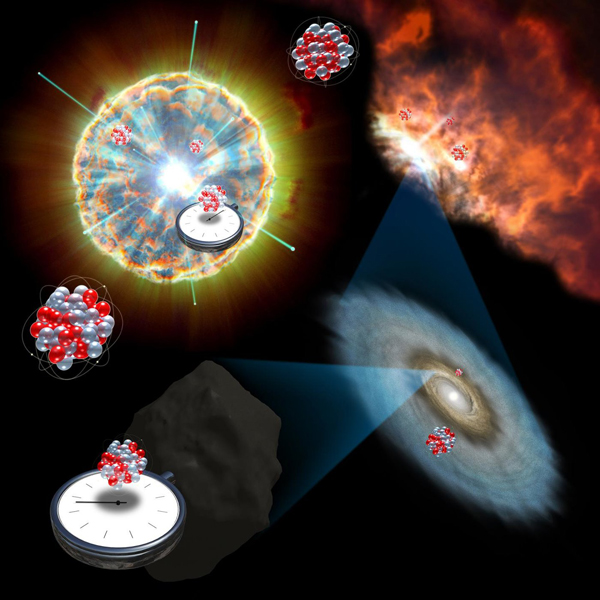Image Credit: NAOJ
Billions of years ago, a huge star blasted open and spewed its guts into space. At that energetic moment, the so-called core-collapse supernova formed a debris cloud of brand-new atoms, forged in the heat of its blast. Time passed. The cloud contracted, attracted to itself by its own gravity. A star formed — our sun — surrounded by chunks of rock and gas that formed our planets and other orbiting bodies. Much later, we came along.
That’s the basic story of our solar system’s birth. And, mostly from watching other supernovas and other star births out in space, scientists know a fair amount about it. But there’s still a lot about what happened during the stellar blast that’s mysterious. What exotic, energetic particles flared into being in that first, hot flash of the old star’s death? How did they shape the atoms and molecules that formed humans? How much time passed between the star’s death and rebirth as our sun?
In a new paper published yesterday (Sept. 4) in the journal Physical Review Letters, researchers proposed a new method for answering those questions.
By Rafi Letzter – Full Story at Live Science



